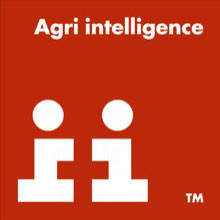Reducing cultivations may help improve long-term soil structure and health. However, the latest research shows that, like profitability, Nitrogen Use Efficiency (NUE) and greenhouse gas (GHG) emission levels depend on crop productivity
The results of field-scale trials at the country’s longest-established grassweed management technology centre at Stow Longa near Huntingdon underline that tillage itself need not necessarily be bad for these key environmental priorities. Indeed, Colin Lloyd, Head of Agronomy at Agrii, who has overseen more than two decades of the centre’s work, sees plenty of room for ‘appropriate’ tillage in heavy land rotations in particular.
“Despite all the ups and downs of grain markets and input costs, yield continues to remain the driver of arable profitability,” he insists. “You can analyse your performance down to the last square metre of land or litre of diesel. But whatever you do, you can’t get away from the fact that decent margins have always and will always depend on sufficient yield.
“Yes, grain quality is important. As is effective input and overhead control. But without the tonnes you’re not in the game. Which is exactly what our rotational work with a range of cereals crops is also showing with NUE and carbon emissions.”
For the past seven years, Mr Lloyd and his R&D team have managed a variety of rotations in one hectare Stow Longa blocks with tillage regimes ranging from continuous and rotational ploughing to deep one pass, min till and direct drilling with catch or cover crops.
As well as huge differences in grassweed populations between different rotations and tillage regimes, their pioneering work has highlighted large differences in margins after cultivations, drilling and all inputs. In 2022, indeed, the range in margins between the best and worst rotation and tillage combination was a staggering £1,821/ha.
More recently, they have extended their work to measure the Nitrogen Use Efficiency and greenhouse gas emissions of their main cereal crops to established protocols. And this has been very revealing.

Yields of Fitzroy grown as a first wheat on the heavy clay ground in 2022 varied by almost 3.1 t/ha between the different tillage regimes. Both continuous ploughing for six years and a plough reset after five years of direct drilling delivered over 9.75 t/ha. In contrast, direct drilling after five years of ploughing and six years of continuous min tilling or direct drilling produced less than 7.25 t/ha.
Unsurprisingly, given exactly the same starting soil N levels and fertiliser applications, this performance was reflected in NUE’s of over 67.5% for the higher tillage regimes and under 50% for the lower ones.
“Using the YEN Zero carbon tool, the lowest tillage regimes stood out as generating around 10% lower CO2 emissions per hectare than the plough ones,” reports Mr Lloyd. “But on a per tonne basis – which has to be what really counts in food production terms – much higher yields gave the plough blocks a GHG emissions advantage of over 25% (Figure 1).
“Even the highest emission regimes were well below the current 340kg CO2eq/tonne UK feed wheat benchmark established by the authoritative 2022 CHAP Net Zero report, with the ploughed areas close to the lowest reported national crop emissions intensity.

“What’s more, we saw the same thing in our Skyway spring barley,” he adds. “The higher tillage regimes gave NUEs a good 40 percentage points up on the lower tillage ones and per tonne CO2eq emissions almost 25% lower (Figure 2).
“Again, it’s all about yield, the plough regimes both producing over 8.75 t/ha against around 6.3 t/ha for the min till/direct drill ones.
“Grassweed populations clearly played their part in these yield differences. But, even after five years of continuous min-tilling or direct drilling with catch and cover crops, our heavy ground clearly isn’t able to support the sort of winter wheat and spring barley yields it is does under the plough.
“Although our work with UKCEH does suggest somewhat more favourable soil microbial populations with reduced tillage, I have to say we have struggled to see any consistent differences between the regimes in either organic matter levels or soil health scores here.”

Interestingly, it’s been a slightly different story with the SY Armadillo hybrid winter barley crop; the 2022 trials showing much less of a yield difference between the tillage regimes, and similarly smaller NUE and GHG emissions differences (Figure 3).
After many years of observing how much less affected hybrid barleys are by seedbed conditions than wheat or spring barley, Mr Lloyd attributes this to their ability to cope better with the more challenging conditions the least tillage regimes present on heavy ground.
Overall, he considers the NUE and emission results particularly encouraging for growers with soils not as well suited to major tillage reductions as some, pointing out that what clearly counts in environmental terms as much as in economic ones is growing a good crop.
“It’s crystal clear from our work that, however you do it, growing a good crop will reward you in NUE and GHG emissions per tonne of production as well as on the bottom line,” Mr Lloyd concludes. “And in many situations this may need a decent amount of tillage.
“Appropriate tillage has to be your driver,” he stresses. “And recognising the obvious machinery and labour-saving opportunities from tillage reductions, this must mean the least tillage necessary for your particular conditions.
“You shouldn’t shy away from low disturbance lifting of heavy or high silt soils that have become too tight. Nor from using the plough as a reset where grassweed populations have become too high. We have to recognise that cultivations aren’t going to completely deplete soils and there is room for them in many rotations, even where the emphasis is on tillage reductions. As with so many other inputs, the secret to success is knowing how much to apply, when and where.”


